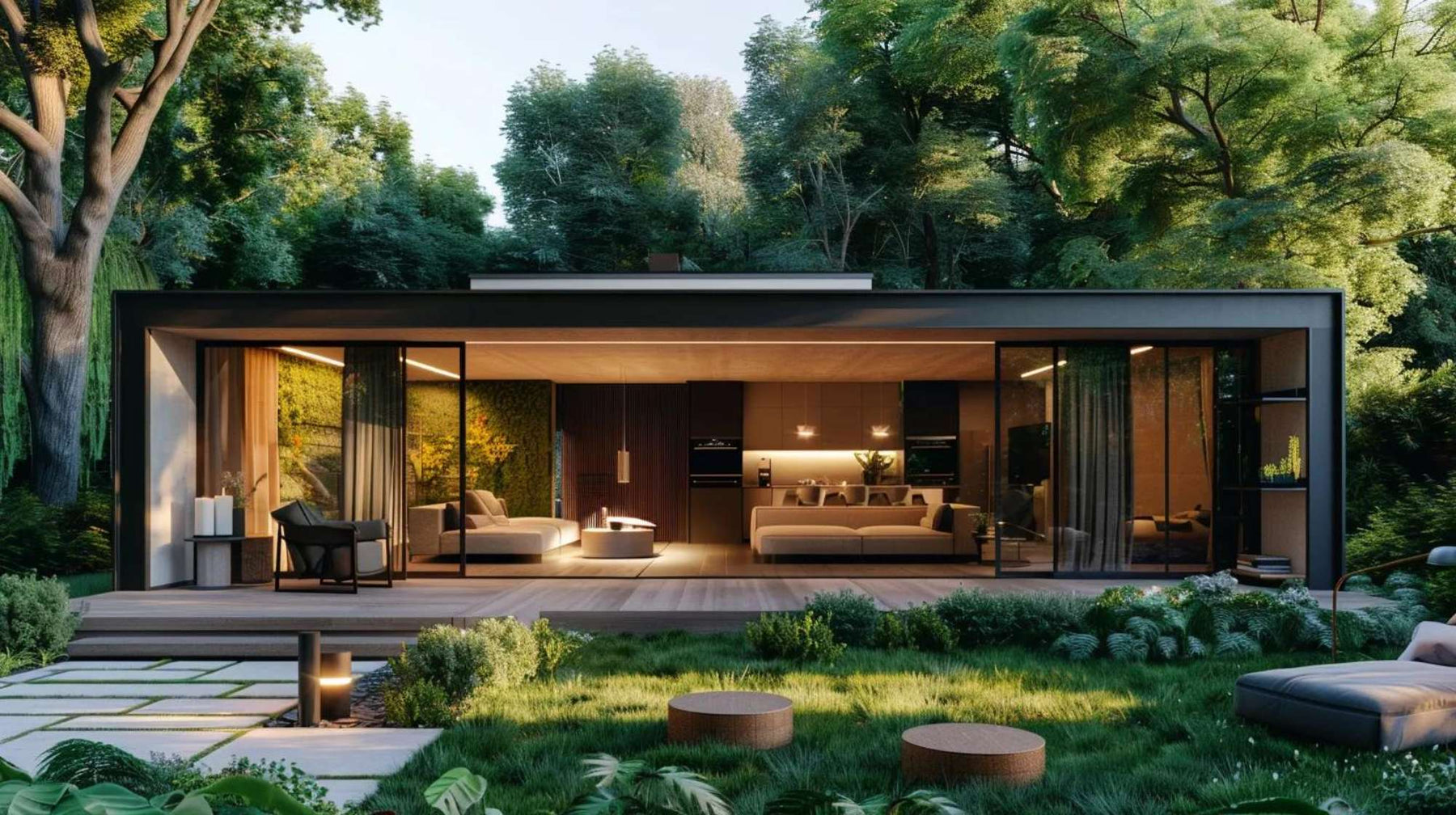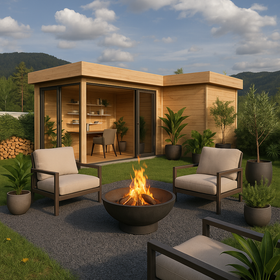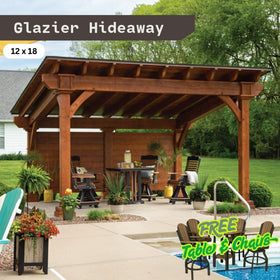512-777-0154

How to Build a Garden House
Want your backyard to feel like a little getaway? Here’s how make garden house: plan it, build it, and add your own style.
With some planning and patience, you can turn that patch of grass into a cozy office, gym, or quiet escape.
It’s easier than it looks. Let’s dive in.
1. Planning Your Garden House Project (The Crucial First Steps)
Every great build starts with a solid plan.
Before you grab the hammer, take time to map out what you want and what you can handle.
Defining the Purpose: Office, Gym, Studio, or Summer House?
Ask yourself why you want a garden house.
Maybe you need a quiet workspace away from the kitchen chaos. Or perhaps you dream of a small gym where you can stretch without bumping into the couch.
Your purpose shapes every choice: size, layout, light, and even the type of flooring. A yoga studio might need wide windows and soft flooring. A storage space, on the other hand, just needs to be dry and sturdy.
Understanding Size, Location, and Orientation
Now, look at your garden. Where will the house sit best?
The sun’s path matters more than you think. A home office facing south will stay bright all day, while a summer retreat might benefit from a shadier spot.
Keep it proportional too. A large structure in a small garden can feel crowded, while a smaller house tucked in the right corner looks charming and balanced.
Navigating Legalities: Do You Need Planning Permission?
Here’s where the less fun part comes in.
Some garden houses slip under the radar for planning permission, but others don’t. Local councils often have rules about height, distance from boundaries, and roof types.
If in doubt, call your local building office before you start. It’s much easier than dealing with a “please remove it” letter later.
Budgeting Your Build: DIY vs. Kit vs. Professional Installation
Money talks when it comes to construction.
If you’re handy and have the tools, a DIY build can save you thousands. Garden house kits are a great middle ground; everything’s pre-cut and ready to assemble.
Not the DIY type? Hiring professionals might cost more, but you’ll get a polished result without the weekend frustration. Choose what fits your budget, time, and skill level.
2. Design and Material Choices for a Year-Round Space
A garden house should feel good in every season, not just during summer. The right materials and smart design make it last longer and stay comfortable year-round.
Selecting Durable and Weather-Resistant Materials
The weather can be unforgiving, so don’t skimp on materials.
Pressure-treated timber is strong and resists rot. Cedar looks beautiful and naturally fights off insects. Pair that with metal or asphalt roofing for reliable protection.
Finish with a coat of exterior sealant or eco-friendly paint to keep everything looking fresh for years.
Essential Comfort: Insulation and Ventilation Strategies
Nobody wants a sauna in summer or an icebox in winter.
Add foam board or fiberglass insulation between the walls to control temperature. Include vents or windows that open to keep air circulating.
If you’re planning to spend a lot of time inside, a small space heater or portable air conditioner can keep things cozy without breaking the bank. If you have a spare, go for Senville 6000 BTU Mini Split Air Conditioner - Heat Pump - SENA/06HF.
Laying the Groundwork: Choosing and Preparing the Foundation
The foundation is the part most people rush, but it’s what keeps everything standing.
Concrete slabs are strong and long-lasting. Gravel pads are more affordable and drain well. Just make sure your site is level, clean, and solid.
Taking time here means fewer problems later, no shifting floors or crooked walls to deal with.
3. The Step-by-Step Construction Guide
This is where your garden house starts to take shape.
Stay patient, measure twice, and enjoy the process. Seeing the walls go up is a satisfying moment.
Building the Main Timber Frame and Walls
Start with the floor frame and check its level. Then raise each wall frame and secure it tightly.
Keep a level handy, you’ll thank yourself later when the door fits perfectly.
Once the frame is steady, add wall panels or boards, leaving space for doors and windows.
Installing the Roof Structure and Waterproofing
Next comes the roof.
Fit your trusses, cover them with plywood, and add a layer of roofing felt. Finish with shingles or metal panels for durability.
A watertight roof keeps everything inside safe, so take your time with sealing.
Cladding the Exterior and Sealing the Structure
Cladding gives your garden house its look and personality.
You can go classic with wood, low-maintenance with vinyl, or modern with composite panels. Seal every gap and edge to keep out moisture and insects.
Think of it as wrapping your house in a weatherproof coat.
Installing Doors and Windows for Maximum Security and Light
Doors and windows aren’t just for looks; they define how the space feels.
Go for double-glazed windows for insulation and natural light. Choose sturdy doors with locks for extra security.
A well-placed window can make a small space feel open and airy.
4. The Final Touches and Long-Term Maintenance
You’ve built the bones. Now it’s time to make it yours. This part turns your structure into a cozy, usable space.
Finishing the Interior: Electrics, Plasterboard, and Flooring
If you’re adding lighting or outlets, call a qualified electrician to wire things safely. Once that’s done, cover the walls with plasterboard and paint in light, welcoming colors.
Flooring can be wood, laminate, or vinyl, something durable and easy to clean. Add a Momeni Archer Indoor Rug - ARC-1 Beige or a mat to warm it up.
Incorporating Outdoor Elements: Decking and Landscaping
A garden house looks even better with a little outdoor flair. Add a deck for lounging, some potted plants for charm, or a gravel path leading up to the door.
These small touches make your garden house feel like it truly belongs.
Maintenance for Longevity
A quick annual check keeps your investment in top shape.
Reapply sealant on wood, clean gutters, and inspect the roof after heavy weather.
A few hours of care each year can add decades to your garden house’s life.
Yes, You Can Make a Garden House
So, how to make a garden house? Plan carefully, use quality materials, and build with patience.
It’s not just a structure, it’s a space that reflects your creativity and lifestyle.
Whether you want a quiet retreat, a fitness corner, or a bright studio, your garden house can be all that and more.
All it takes is vision, effort, and a little weekend determination. Your dream backyard starts with one plank at a time.








